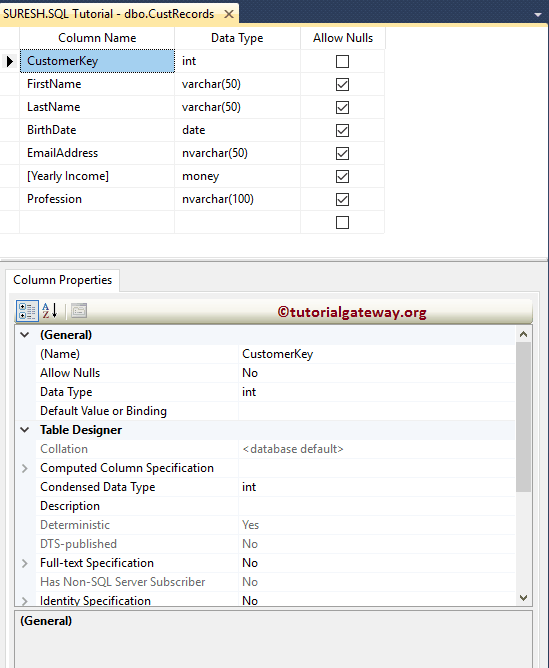- Sql Generate Primary Key Value Calculator
- Sql Insert Next Primary Key Value
- Sql Primary Key Name
- Sql Generate Primary Key Value List
- SQL - Primary Key. A primary key is a field in a table which uniquely identifies each row/record in a database table. Primary keys must contain unique values. A primary key column cannot have NULL values. A table can have only one primary key, which may consist of single or multiple fields.
- By convention, non-composite primary keys of type short, int, long, or Guid are set up to have values generated for inserted entities, if a value isn't provided by the application. Your database provider typically takes care of the necessary configuration; for example, a numeric primary key in SQL Server is automatically set up to be an IDENTITY column.
Jun 07, 2012 This video shows you how to create a new table, set a primary key, and apply default value to your column in SQL Server Management Studio.
Primary Key Generation Using Oracle's Sequence
Oracle provides the sequence utility to automatically generate unique primary keys. To use this utility to auto-generate primary keys for a CMP entity bean, you must create a sequence table and use the @AutomaticKeyGeneration annotation to point to this table.
In your Oracle database, you must create a sequence table that will create the primary keys, as shown in the following example:

This creates a sequences of primary key values, starting with 1, followed by 2, 3, and so forth. The sequence table in the example uses the default increment 1, but you can change this by specifying the increment keyword, such as increment by 3. When you do the latter, you must specify the exact same value in the cacheSize attribute of the @AutomaticKeyGeneration annotation:
If you have specified automatic table creation in the CMP bean's project settings, the sequence table will be created automatically when the entity bean is deployed. For more information, see @JarSettings Annotation. For more information on the definition of a CMP entity bean, see below.
Primary Key Generation Using SQL Server's IDENTITY
Sql Generate Primary Key Value Calculator
In SQL Server you can use the IDENTITY keyword to indicate that a primary-key needs to be auto-generated. The following example shows a common scenario where the first primary key value is 1, and the increment is 1:
In the CMP entity bean definition you need to specify SQLServer(2000) as the type of automatic key generator you are using. You can also provide a cache size:
If you have specified automatic table creation in the CMP bean's project settings, the sequence table will be created automatically when the entity bean is deployed. For more information, see @JarSettings Annotation. For more information on the definition of a CMP entity bean, see below.
Primary Key Generation Using a Named Sequence Table
A named sequence table is similar to the Oracle sequence functionality in that a dedicated table is used to generate primary keys. However, the named sequence table approach is vendor-neutral. To auto-generate primary keys this way, create a named sequence table using the two SQL statements shown in the example:
In the CMP entity bean definition you need to specify the named sequence table as the type of automatic key generator you are using. You can also provide a cache size:
If you have specified automatic table creation in the CMP bean's project settings, the sequence table will be created automatically when the entity bean is deployed. For more information, see @JarSettings Annotation. For more information on the definition of a CMP entity bean, see the next section.
Note. When you specify a cacheSize value for a named sequence table, a series of unique values are reserved for entity bean creation. When a new cache is necessary, a second series of unique values is reserved, under the assumption that the first series of unique values was entirely used. This guarantees that primary key values are always unique, although it leaves open the possibility that primary key values are not necessarily sequential. For instance, when the first series of values is 10...20, the second series of values is 21-30, even if not all values in the first series were actually used to create entity beans.
Defining the CMP Entity Bean
When defining a CMP entity bean that uses one of the primary key generators, you use the the @AutomaticKeyGeneration annotation to point to the name of the primary key generator table to obtain primary keys. Also, you must define a primary key field of type Integer or Long to set and get the auto-generated primary key. However, the ejbCreate method does not take a primary key value as an argument. Instead the EJB container adds the correct primary key to the entity bean record.
Sql Insert Next Primary Key Value
The following example shows what the entity bean might look like. Notice that the bean uses the named sequence option described above, and that ejbCreateSql Primary Key Name
method does not take a primary key:Sql Generate Primary Key Value List
Related Topics